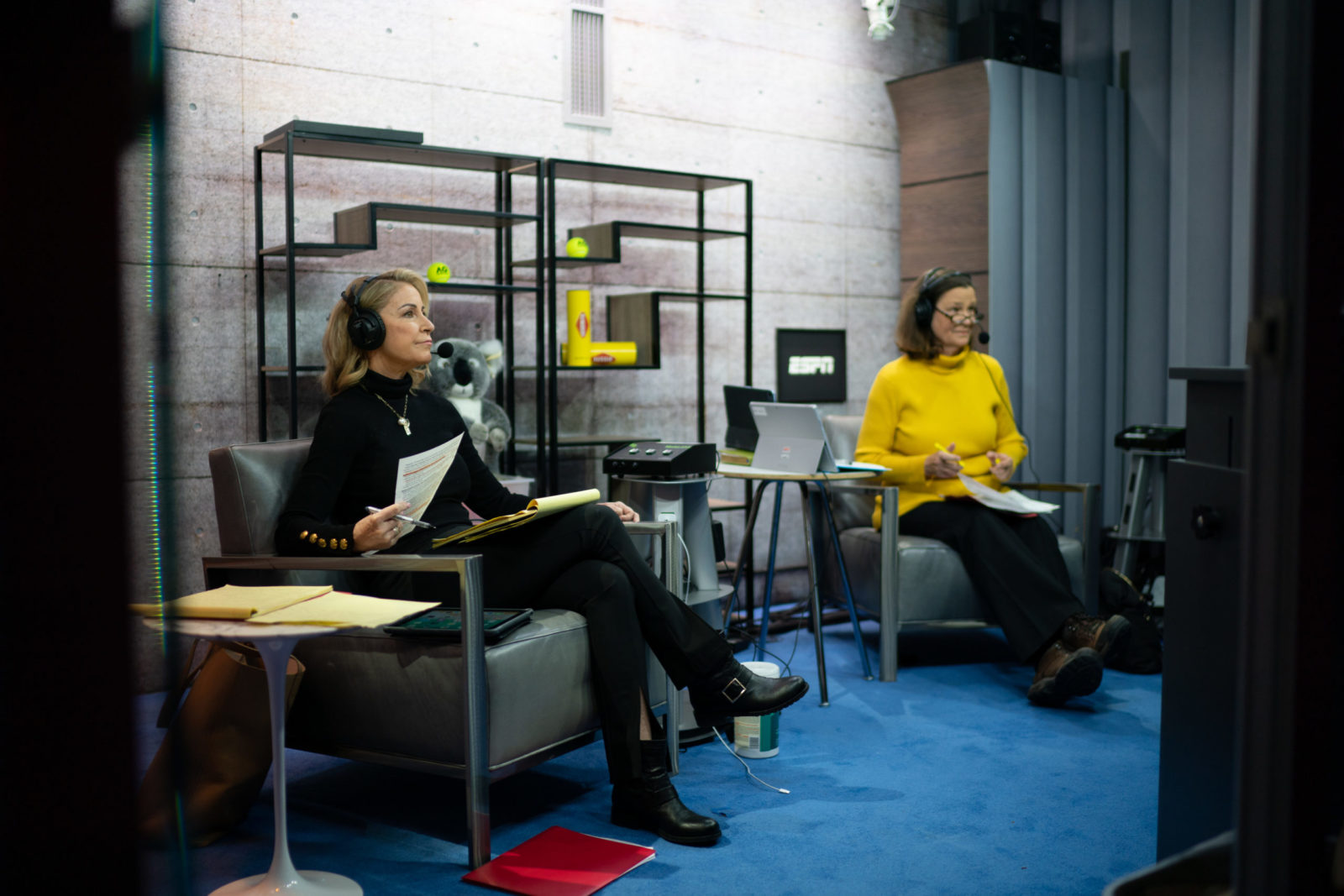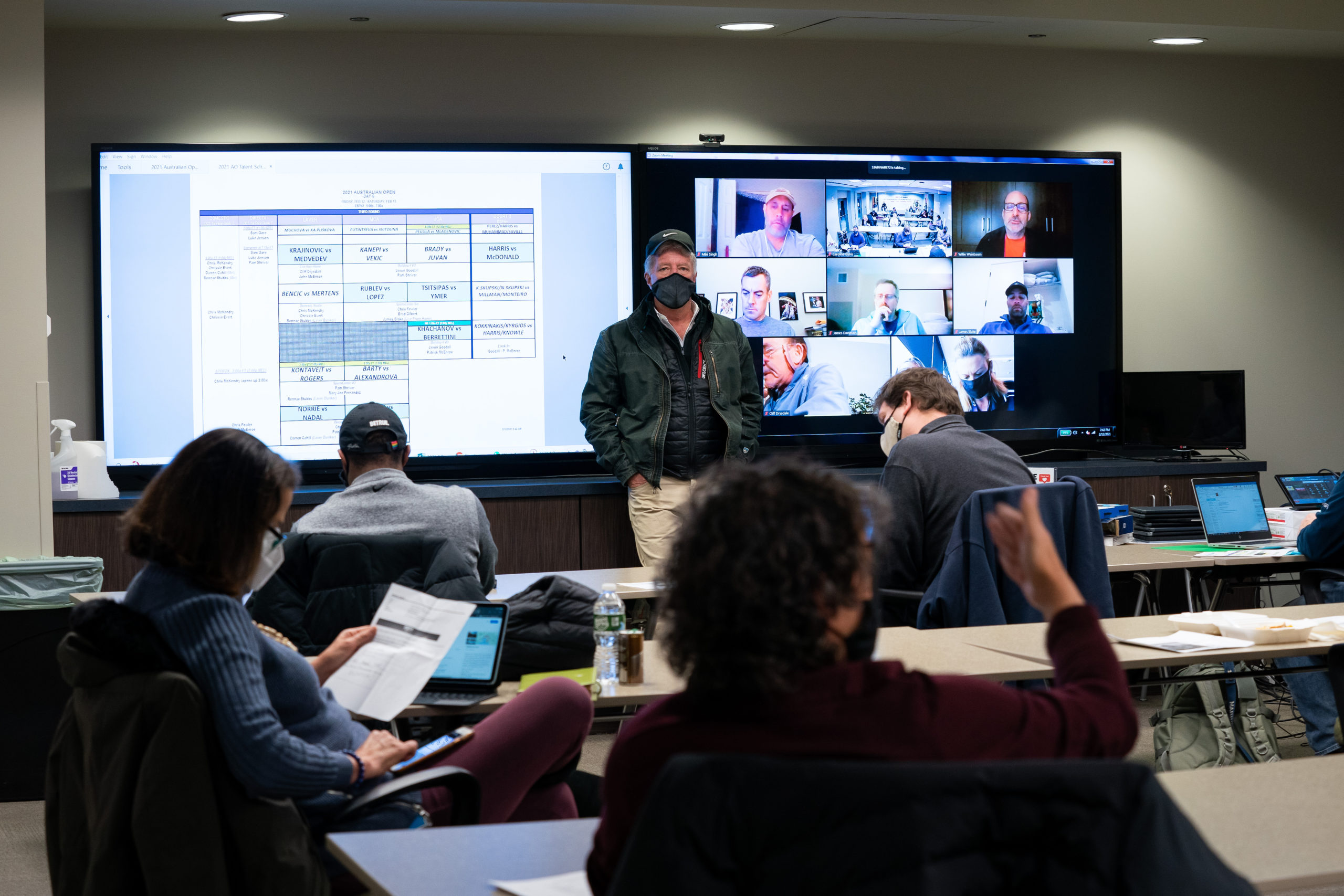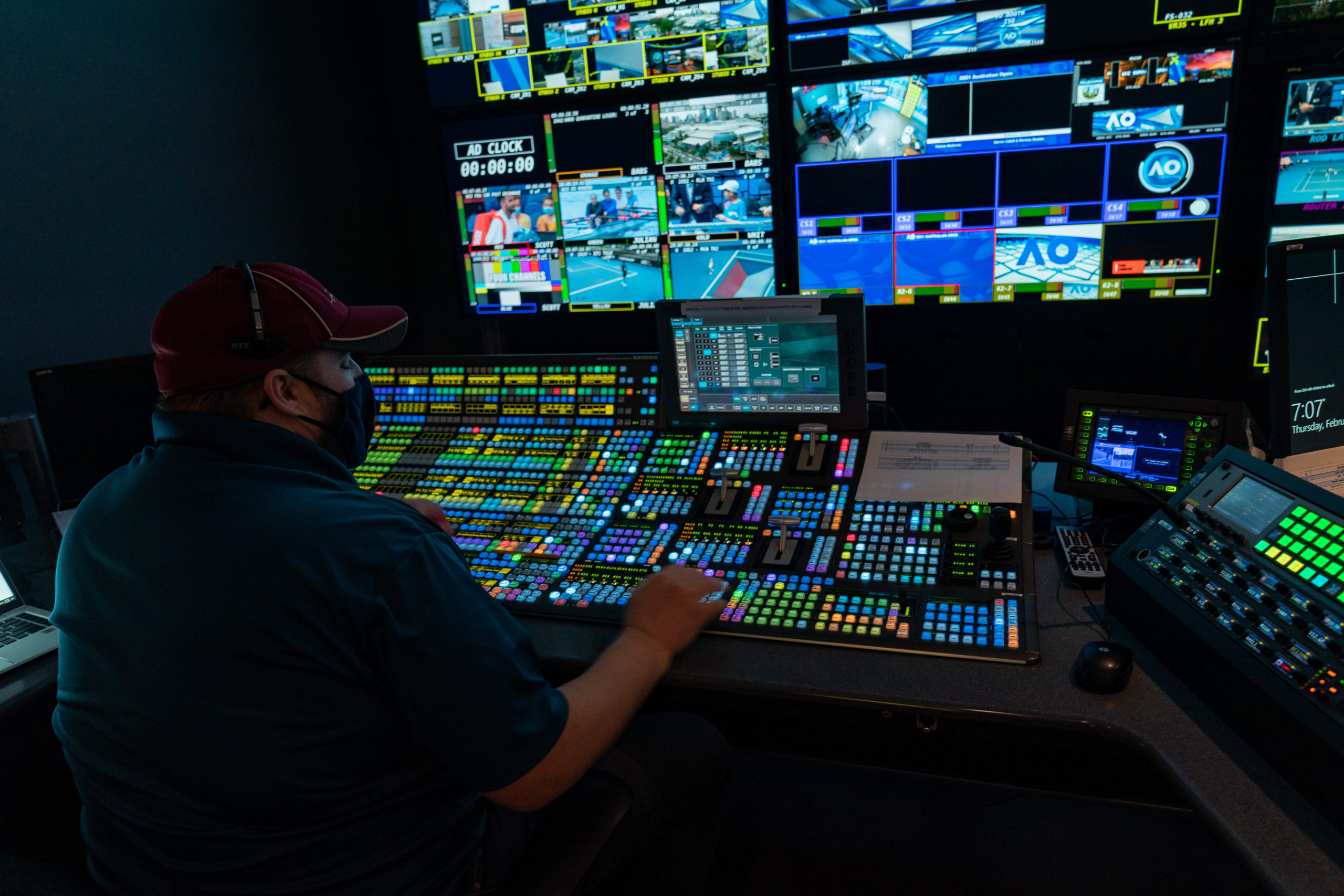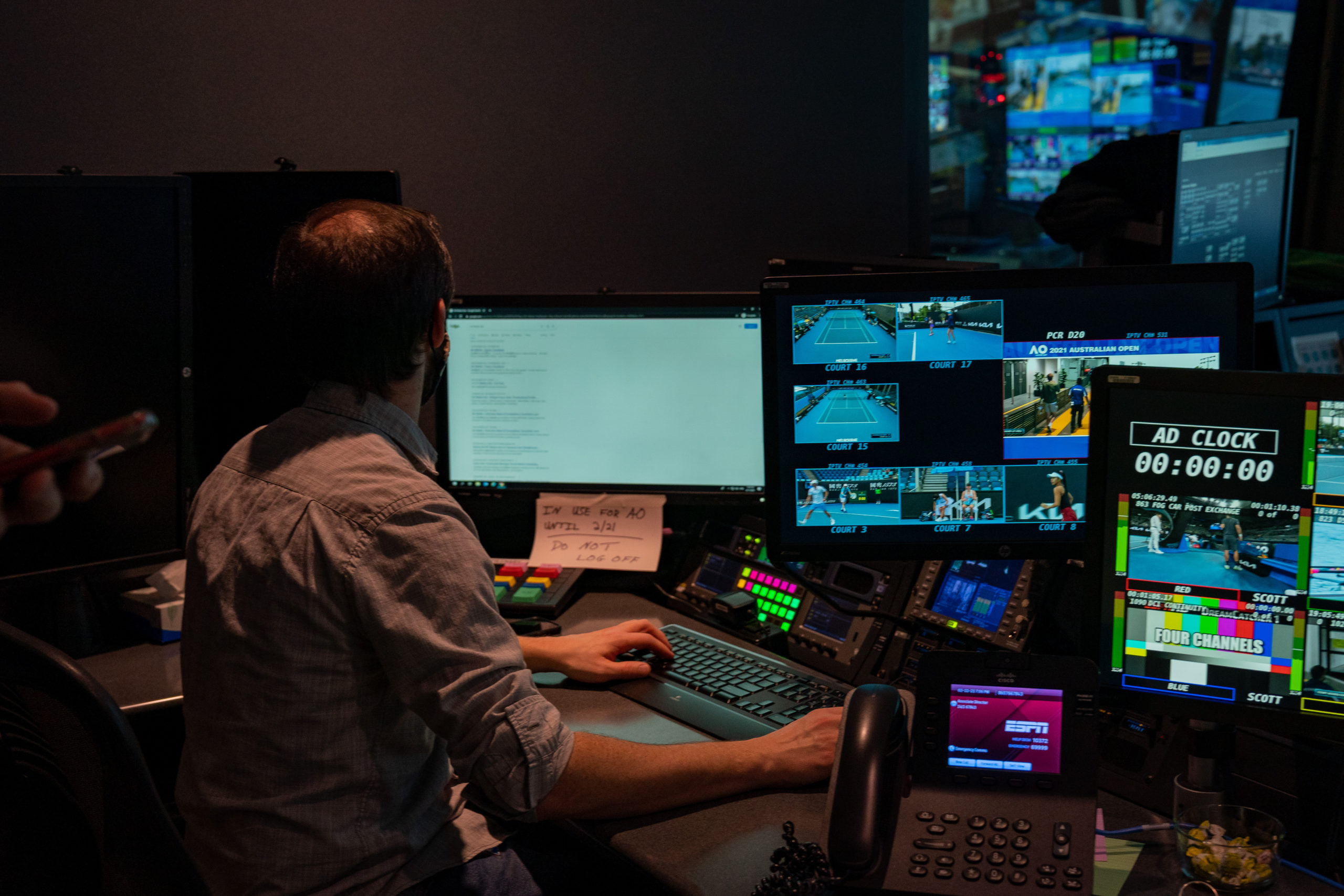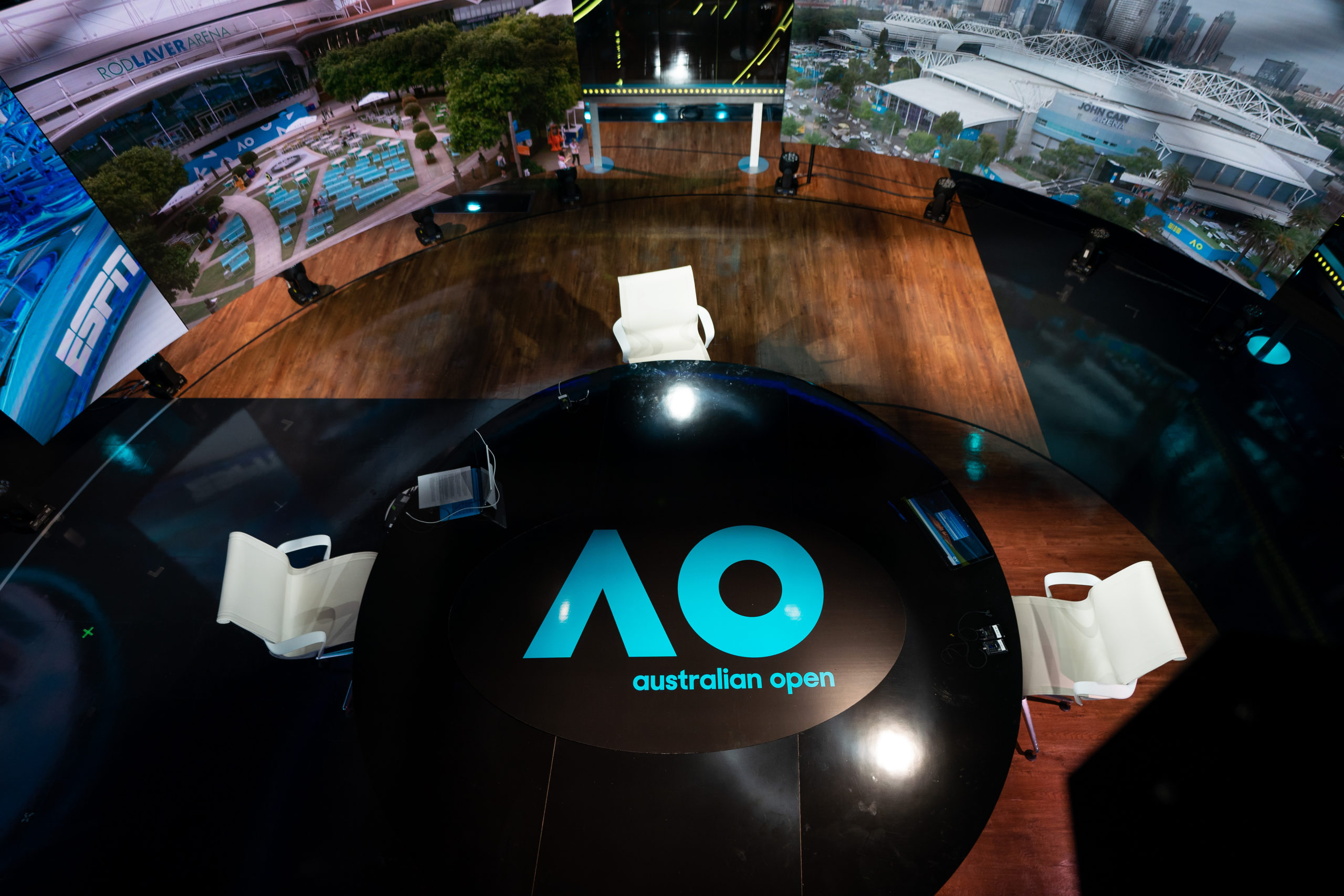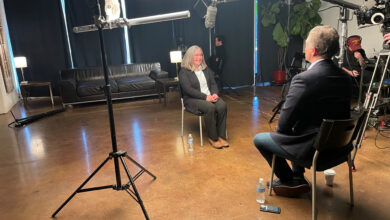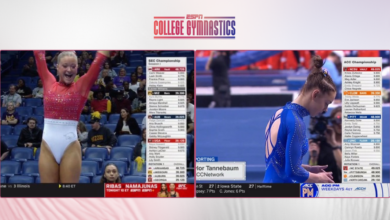3 Things To Know About How ESPN Produces The Australian Open From Bristol
Communication, collaboration and living the "vampire life" are essential to bringing thousands of hours of tennis an ocean away
Everything’s the same, yet different, for ESPN’s 37th Australian Open. Thanks to the pandemic, everyone and everything that would be on-site in Melbourne is this year at ESPN Plaza in Bristol, Conn.
Here are the three things you need to know are essential in producing 110 hours of live television and 1,000 hours streamed on the ESPN App from the other side of the world.
No. 10 seed Serena Williams continues her quest to tie Margaret Court for the most Grand Slam championships with 24. The first hurdle for the two victories she needs for the 2021 Australian Open title is a semifinal matchup against No. 2 seed – and three-time Major champion – Naomi Osaka (10 p.m. ET, ESPN2).
Communication
People are not only spread throughout buildings on ESPN’s campus but across time zones. Employees and commentators collaborate with Bristol from New York, Wisconsin, Texas, California, London, and Melbourne. Clear, concise communication is key to a successful broadcast.
Whereas previously, one might shout across a room or convey a message with hand motions or facial expressions, now communication is verbal and electronic. To accomplish this without delays inherent in cross- and inter-continental conversations, ESPN makes sure there is no delay.
“The main reason that the conversations between Bristol and site do not appear delayed is that the IFB return to the talent on-site is via Unity Server, which benefits from minimal latency,” says Sam Olsen, senior specialist. “This allowed commentators thousands of miles apart to converse as if they were in the same room.”
In addition, the video signal must be manipulated.
Larry Wilson, associate director, Remote Operations, says: “Because the video and audio sources are not contained locally and integrated within the compound in Australia, ESPN must account for timing of the critical source traveling 10,000 miles from the east coast to Australia, and another 3,000 miles between Los Angeles and Connecticut. This must be done in order to share resources and content with Tennis Channel.”
Collaboration
It takes a village to produce the Australian Open in Bristol. After all, the not-so-simple task at hand is to provide simultaneous coverage of up to all 16 courts for clients around the world in addition to the domestic service. Thus, 42 separate signals must be sent from Australia to Connecticut.
A variety of groups had to team together to plan and execute the complicated workflow once those signals arrive: ESPN’s Production, Remote Production Operations, and Studio Production Operations groups, plus Disney Media and Entertainment Distribution’s Technology, Engineering and Network Infrastructure areas.
“The partnership between groups hugely impacted the success of bringing the Australian Open integration to the campus in Bristol,” says Haili Menard, DMED Production Operations specialist. “We enabled our production teams to access Australia’s on-site router as well as SMT data streams. In addition, we navigated the complex workflows of media transfer required. This event has different media networks and formats traveling between Bristol Main Campus, Bristol North Campus, Tennis Australia, and Tennis Channel. The broadcast was a very successful collaboration and helped build relationships for future innovations!”
Up All Night
Perhaps the biggest adjustment was to each person’s biological clock. Working on the East Coast on an event 16 time zones ahead means living a “vampire life.” Going to bed at dawn, going back to work after sunset, and never knowing whether it’s appropriate to say “tonight,” “tomorrow,” or “yesterday.”
“You know you’re upside down when you’re coming to work here at Bristol, Conn., about 8:15 p.m., and you’re feeling great,” says ESPN tennis analyst Patrick McEnroe. “O.K., I’m feeling like I’m ready to go all night ’cause that’s what I’ve done basically the last couple of nights. Breakfast at around 4 p.m., a little gym, a little talk to home, checking in on the home front, come in to work. Making that adjustment took a couple of days, but now?… Up all night?….Routine.”
Then again, as analyst Brad Gilbert, a noted early riser, is fond of saying, “Sleep is overrated during a Major.”
